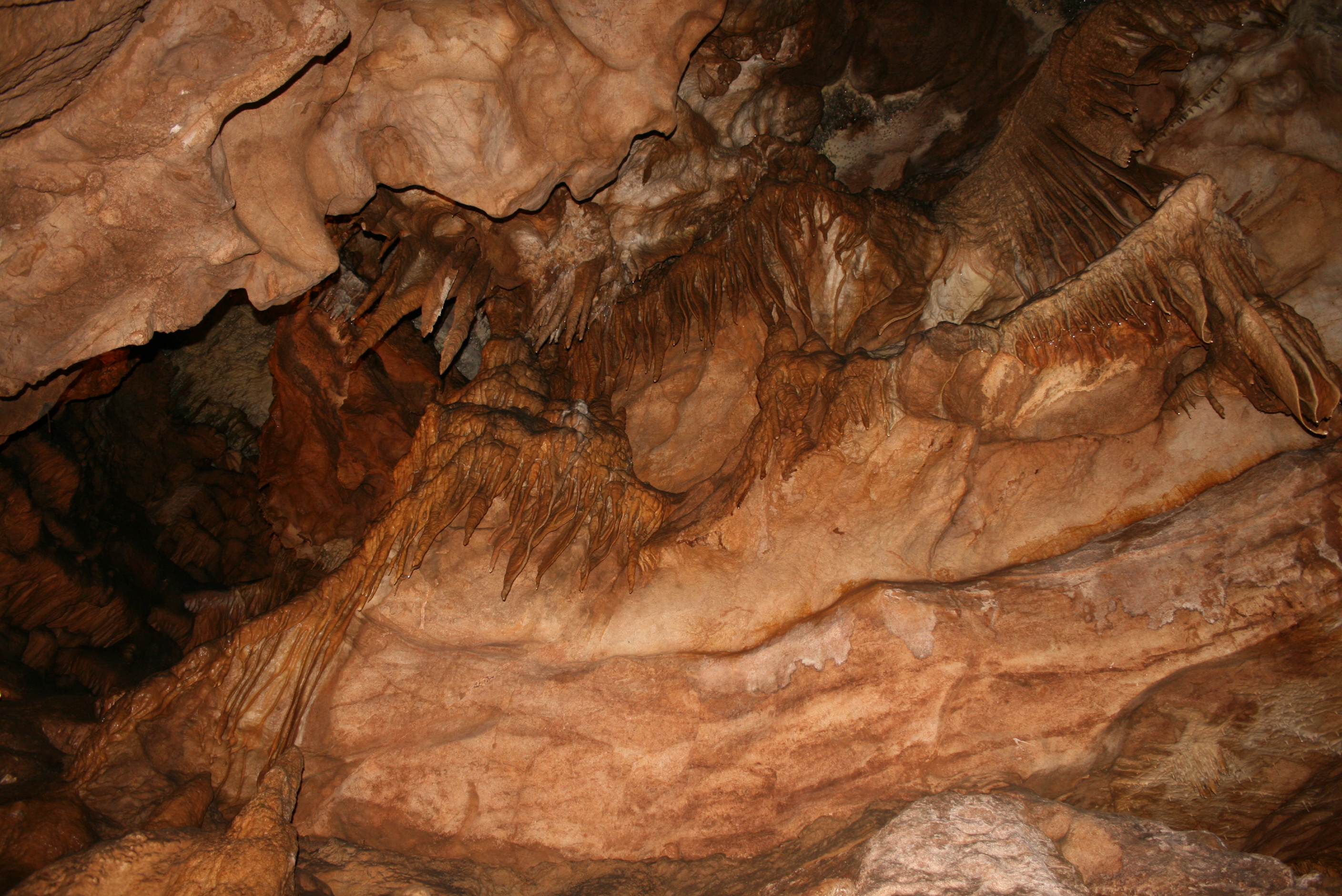Jasovská Cave on:
[Wikipedia]
[Google]
[Amazon]
Jasov Cave (, and ) is a

Jasov Cave
at
Jasov Cave on the Slovak Caves Administration page
Show caves in Slovakia World Heritage Sites in Slovakia Geography of Košice Region Tourist attractions in Košice Region Archaeological sites in Slovakia Caves of Aggtelek Karst and Slovak Karst Paleolithic sites Cave bear {{Slovakia-geo-stub
speleothem
A speleothem (; ) is a geological formation made by mineral deposits that accumulate over time in natural caves. Speleothems most commonly form in calcareous caves due to carbonate dissolution reactions. They can take a variety of forms, depen ...
limestone
Limestone is a type of carbonate rock, carbonate sedimentary rock which is the main source of the material Lime (material), lime. It is composed mostly of the minerals calcite and aragonite, which are different Polymorphism (materials science) ...
cave and archaeological site
An archaeological site is a place (or group of physical sites) in which evidence of past activity is preserved (either prehistoric or recorded history, historic or contemporary), and which has been, or may be, investigated using the discipline ...
in the Slovak Karst in Slovakia
Slovakia, officially the Slovak Republic, is a landlocked country in Central Europe. It is bordered by Poland to the north, Ukraine to the east, Hungary to the south, Austria to the west, and the Czech Republic to the northwest. Slovakia's m ...
. It is located near the village of Jasov, around from Košice
Košice is the largest city in eastern Slovakia. It is situated on the river Hornád at the eastern reaches of the Slovak Ore Mountains, near the border with Hungary. With a population of approximately 230,000, Košice is the second-largest cit ...
city. Along with a number of caves of the Slovak Karst, Jasov Cave has been induced into the UNESCO World Heritage
World Heritage Sites are landmarks and areas with legal protection under an international treaty
A treaty is a formal, legally binding written agreement between sovereign states and/or international organizations that is governed by int ...
list as a part of the Caves of Aggtelek Karst and Slovak Karst site, because of its unique diversity of speleothems and its testimony to tropical and temperate cave-forming processes. The cave is known for its pagoda-like stalagmites, sinter waterfalls, and straw stalactites.
Jasov Cave is a total of 2.8 km long, with an air temperature that ranges from 8.8 and 9.4°C. The cave provides habitat for 18 species of bats, and remains of the extinct cave bear
The cave bear (''Ursus spelaeus'') is a prehistoric species of bear that lived in Europe and Asia during the Pleistocene and became extinct about 24,000 years ago during the Last Glacial Maximum.
Both the word ''cave'' and the scientific name '' ...
and cave hyena have been discovered within the cave.
History
Jasov Cave was partly opened for the public in 1846, making it the oldest publicly accessible cave in Slovakia. The lower parts of the cave were discovered in 1922 to 1924 and a concrete footpath was built and electrical lightning was installed in 1924. out of are open to the public. Many archaeological discoveries of thePaleolithic
The Paleolithic or Palaeolithic ( years ago) ( ), also called the Old Stone Age (), is a period in human prehistory that is distinguished by the original development of stone tools, and which represents almost the entire period of human prehist ...
, Neolith and the Hallstatt
Hallstatt () is a small town in the district of Gmunden District, Gmunden, in the Austrian state of Upper Austria. Situated between the southwestern shore of Hallstätter See and the steep slopes of the Dachstein massif, the town lies in the Sa ...
periods have been made in the cave.
See also
* List of caves in SlovakiaReferences
External links
Jasov Cave
at
Jasov Cave on the Slovak Caves Administration page
Show caves in Slovakia World Heritage Sites in Slovakia Geography of Košice Region Tourist attractions in Košice Region Archaeological sites in Slovakia Caves of Aggtelek Karst and Slovak Karst Paleolithic sites Cave bear {{Slovakia-geo-stub